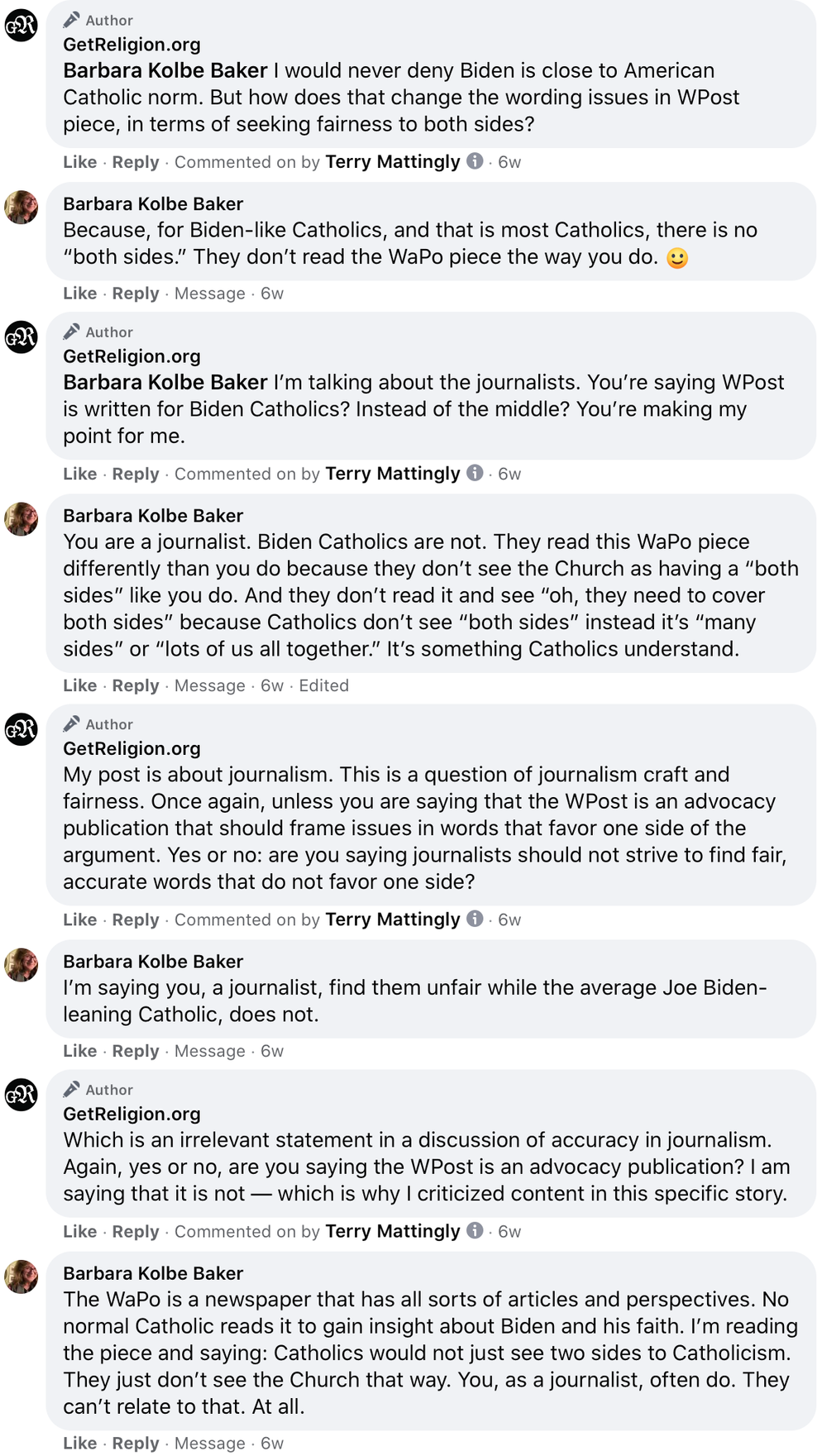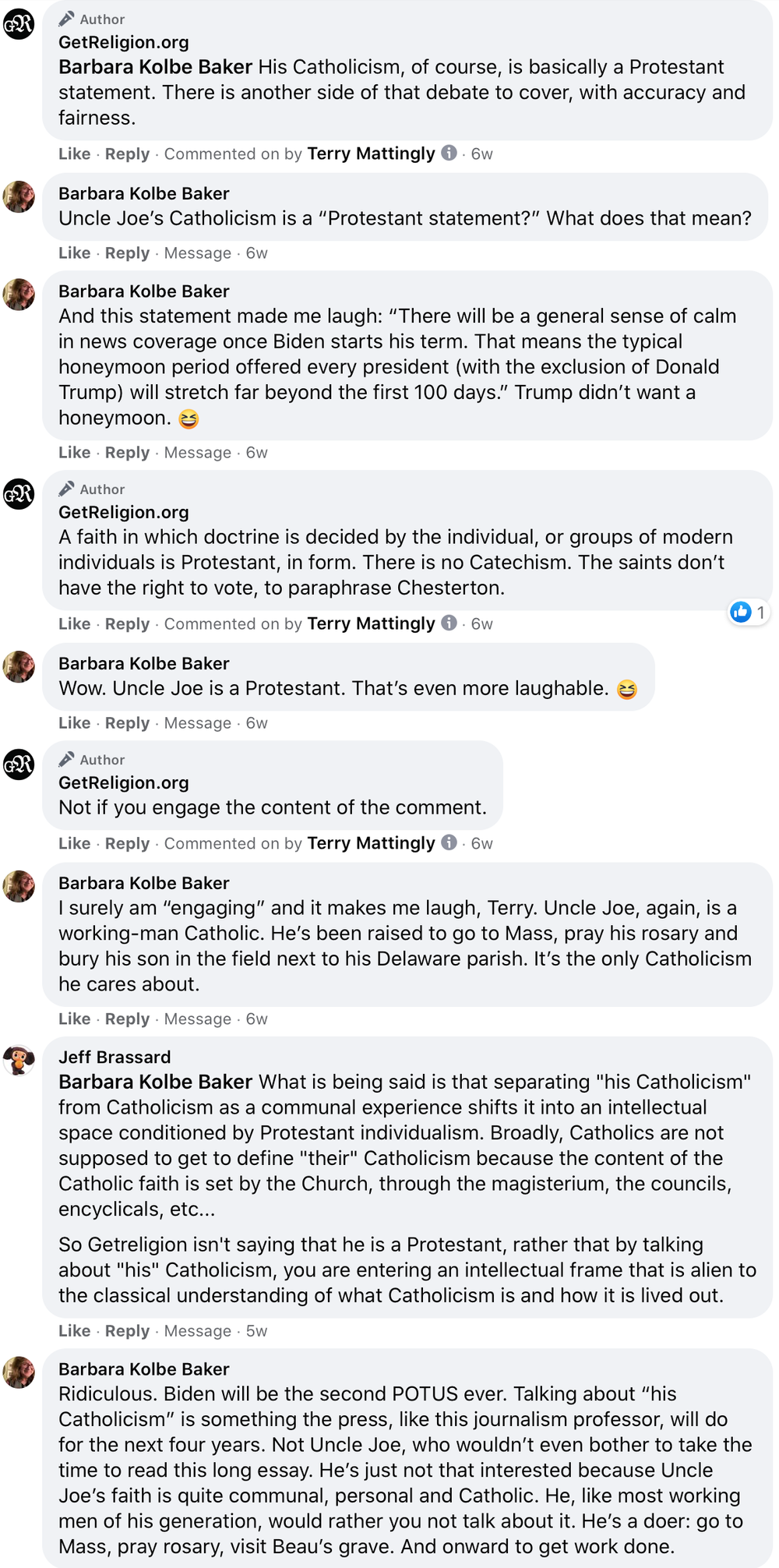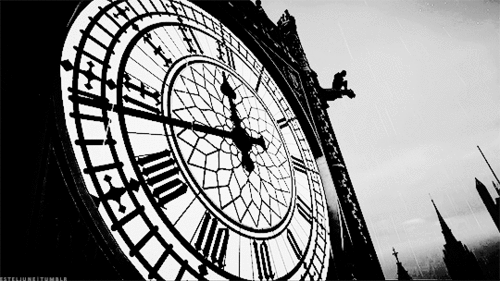Growing old is complicated.
This is especially true during these bizarre COVID-19 days in which one day runs into another and sometimes it’s hard to remember what is what and when is when.
Oh well, whatever, nevermind. I being this up because GetReligion.org launched on Feb. 2, 2004 (even though the first post was written a day earlier). I think that means we just turned 17 and are headed into year No. 18, but my aging mind goes rather numb just thinking about it.
This blog has always had two essential goals.

The first is to highlight what we call “ghosts” in mainstream news coverage, as in essential facts and themes about religion that journalists — on lots of beats — frequently miss when covering news stories, big and small. A side effect of that task has been urging newsroom managers to hire experienced religion-beat reporters to strengthen their newsrooms.
Goal No. 2 is related to that. We have tried, year after year, to defend what is frequently called the American Model of the Press (see this .pdf) — with its emphasis on accurate, fair-minded, even balanced coverage of stories in which there are competing, or even clashing, viewpoints. For a taste of what that sounds like, check out this famous 2003 memo by the late, great, Los Angeles Times editor John Carroll. Here’s a crucial chunk of that, after his critique of a one-sided story:
The reason I’m sending this note to all section editors is that I want everyone to understand how serious I am about purging all political bias from our coverage. We may happen to live in a political atmosphere that is suffused with liberal values (and is unreflective of the nation as a whole), but we are not going to push a liberal agenda in the news pages of the Times.
I’m no expert on abortion, but I know enough to believe that it presents a profound philosophical, religious and scientific question, and I respect people on both sides of the debate. A newspaper that is intelligent and fair-minded will do the same.
In recent years, economic, cultural and political forces have greatly weakened the American Model of the Press (see this recent Clemente Lisi post on that topic). Some people say this model is outdated, in a digital age in which opinion is cheap and information is expensive and the safest business model — producing mouse-clicks and loyal subscribers — is to tell your niche audience what it wants to hear.
GetReligion still publishes quite a bit of media criticism linked to this press model, which often leads to emails from readers — on the left and right, interestingly enough — who think there are lots and lots of news stories about religion, culture and morality in which there is only “one side” that is worthy of coverage that shows respect for its point of view.
For example, I recently wrote a piece that ran with this headline: “Washington Post explores Joe Biden’s faith, while embracing language of Catholic left.” Here are two crucial chunks of that, linked to GetReligion’s birthday and the American Model of the Press:
Right now, there are Catholics arguing about whether Biden is “a Roman Catholic.” …
This brings us to the must-read Washington Post story that ran the other day with this headline: “Biden could redefine what it means to be ‘a Catholic in good standing.’ Catholics are divided on whether that is a good thing.” The key words are “in good standing” — referring to Biden continuing to be active in the sacraments of the Catholic faith, as symbolized by him going to Mass and receiving Holy Communion.
In terms of journalism, the good news is that this Post story quotes Catholic voices on both sides of this doctrinal debate. The bad news is that key passages in this report are worded — oh so precisely — in ways that will please Catholics on the doctrinal left and infuriate those on the doctrinal right.
Such as? What are the “fighting words” in this Post report?
This is long, but essential:
Well for starters, consider: “But to many millions of Catholics who voted for him, Joe Biden and his focus on healing are a compassionate, Pope Francis-like model of their faith.” Conservative Catholics are, of course, opposed to “healing” and “compassion.” Are the Little Sisters of the Poor opposed to “healing” and “compassion”?
Then again, there’s this about the practice of Catholicism: “Should it be more focused on qualities like engagement and empathy or on purifying doctrine?” Why not say “defending” doctrine, when discussing the actions and statements of a politician who has chosen to remain a Catholic — after performing a same-sex marriage ceremony and erasing whatever centrist stances he has previously taken on right-to-life issues?
Continuing on: “Is it as interested in Catholic teachings on poverty, refugees and the environment as those on sexuality and reproduction, or should it continue to place abortion law above all?” At the very least, any discussion of that point would have to cover the views of the most recent three popes (yes, including Pope Francis) on the ways in which the church’s defense of the unborn are rooted in the same sanctity-of-life teachings that define its teachings on poverty, immigration, labor, etc. It might even help to consult the Catechism of the Catholic Church on why abortion is such a crucial doctrinal issue.
I could offer dozens of other examples in the article.
This led to an interesting exchange with a media pro on Facebook. (Some GetReligion readers have told me that they have trouble accessing specific materials on Facebook, so here is that exchange in a series of screenshots.)
In my experience, “American” Catholics can argue about all kinds of things — Gregorian chant vs. “On Eagle’s Wings,” nuns in pant suits vs. those in habits, receiving Holy Communion on their knees vs. standing, the Catholic Catechism vs. the Sexual Revolution, you name it. I thought it was crucial for journalists to cover both sides of those debates with accuracy, fairness and, yes, even balance. Was I wrong?




And so forth and so on. World without end. Amen.
Happy birthday, GetReligion (I guess).













